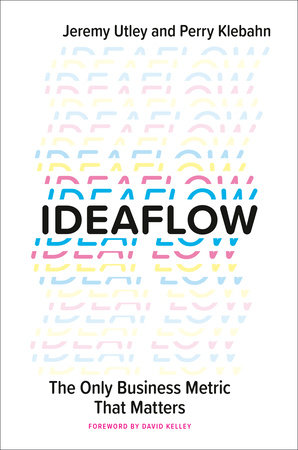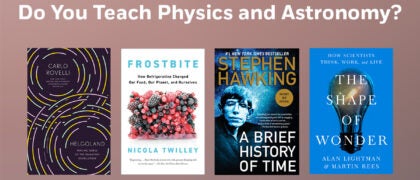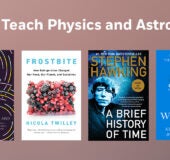 By: Lisa Yokana, STEAM Coordinator at Scarsdale High School
By: Lisa Yokana, STEAM Coordinator at Scarsdale High School
I am a high school teacher who teaches social entrepreneurship and runs a STEAM program at Scarsdale High School, a public school district just north of New York city. I began using Design Thinking in my classes over a decade ago, as a process for students to solve real problems in our community. I knew that students had changed since I first began teaching, and I needed a way to engage them through tackling real problems. While most traditional forms of education are still content focused, our STEAM program teaches students Design Thinking as a problem solving methodology. When I read Ideaflow, it validated this as what our students need, particularly now.
In Ideaflow, Jeremy Utley and Perry Klehban write, “Unresolved problems make us anxious. Anxiety is the brain’s way of drawing conscious attention to something it can’t yet solve. Rather than obey this warning signal, however, we tend to let this very useful emotion inhibit the very creative output a solution would require. When a problem makes us nervous and we don’t see a clear path towards solving it, we use distractions to avoid thinking about it, postponing the uncomfortable feeling until later. A moment spent scrolling through social media only strengthens the underlying anxiety unfortunately. This habit of avoidance creates a negative feedback loop that feeds procrastination and leaves us mentally and emotionally exhausted. We’re fighting with ourselves instead of with the problem itself. Once we have a trusted method for problem solving that tells us exactly how to proceed in the face of uncertainty, it becomes so much easier to harness anxiety and use its power properly.”
As an educator for over 25 years, I have watched as smart phones changed our children’s brains and their behavior. Used to the easy access to information and the dopamine hit from their phones, students struggle in the face of difficult problems. During COVID, parents, understandably, did everything they could to make their child’s lives easier. Teachers, myself included, felt sorry for our students stuck in their bedrooms for hours at a time, alone and staring at a screen. We, in the name of kindness, made their lives easier, covering less material and generally asking less of them. Now, back in the world, these children’s levels of anxiety are through the roof. Never having had to solve difficult problems for themselves, they become incredibly anxious when faced with any uncertainty. Instead of seeking a problem solving process, they self soothe, because that is what they have been taught to do, if not directly by parents and peers, then indirectly through the media. And self soothing only puts off solving the problem, as Utley and Klehban state, with anxiety compounding as time goes on and more unsolved problems appear.
Why aren’t we equipping our students with a problem solving process that can be leveraged at any time, giving them a sense of agency in the world? Instead, we talk at them, stuffing content into their heads, which they memorize, sometimes without understanding, and then spit back out on a test, only to forget it all shortly after. Our children are on a dangerous road.
When students are taught design thinking and problem solving methodologies, like the ones Utley and Klehban lay out, and given real world problems to solve, students learn that they can effect change in their world. Through solving even the smallest problem, like how to successfully store an often-used tool in the classroom in a way that other students will put it away when they are done using it, students learn they can change the world they live in for the better. Teaching these problem solving methodologies to all children would allow them to identify and tackle problems as they arise and step off the anxiety treadmill.
At Scarsdale High School, we are doing just that. In our Design Lab, created from an old, unused auto shop, students have access to modern tools and machinery. The space announces itself as untraditional, with orange walls, flexible seating and huge windows. In our capstone class, social entrepreneurship, students tackle real world problems related to the UN Sustainable Development goals. They look for local problems and partners, follow a design thinking methodology, brainstorm, test and iterate until they have a viable solution that can be scaled. When I read Ideaflow, I knew it would be valuable for my students. Utley and Klehban use examples from industry to illustrate each step of the design process and this is something my students find useful and fascinating. In other, more traditional classes, they learn content and then apply it to problem sets or to answer related questions. In our class, they start with a problem they choose and then learn whatever they need to solve it. The design methodology that is laid out in Ideaflow, allows students to understand the importance of brainstorming multiple ideas, testing them quickly to learn what works and what doesn’t, and creating their own “pipeline” of ideas. Teams create a scalable product or service that solves a problem in the world. They learn the value of doing good for others and most importantly they learn a problem solving methodology that stays with them through college and beyond.
Recently, we interviewed students who came through our program to ask how it has affected them. They all spoke about having learned a process with which to tackle ambiguous and complex problems and how they have used that process in their classes, internships, jobs and life. One young woman spoke about being excited to tackle difficult challenges because, although still daunting, she knew she had a process and a place to begin that would guide her through it. The agency they have gained has stayed with them and they are the young people that will truly change the world. We are at a pivot point in education, a mental health crisis for our children. Education needs to change now, to prepare our children for the future, one where they will need creative thinking to solve the world’s enormous problems. All educators should read this book, adopt its practices, and teach its methodologies to their students. Ideaflow is a tool that gives teachers the scaffold to do this.
In collaboration with Ideaflow co-author Jeremy Utley, Lisa moderates a discord group to support and encourage like-minded educators ( to implement the tools of the book into their teaching techniques and lesson plans. Please join the Educators’ Junto discord group (open to all K12 and college-level educators) if you would like to beta test new tools and modes of instruction to drive differentiated student outcomes.
For more information about this book, click here
To watch Jeremy Utley and Perry Klehban talk about Ideaflow, click here






